The Philippine Art Book (First of Two Volumes) - Book Release
13 May 2022
April 2022 -- Artes de las Filipinas welcomed the year 2022 with its latest publication, The Philippine Art Book, a two-volume sourcebook of Filipino artists. The data gathering for this book began in the year 2012 and was completed in 2020 to give time for artists’ interviews. Scattered interviews and correspondence to artists’ kins and exhaustive library research and available records were utilized in writing the entries of each artist.
The book has become an A-Z guide to more than a thousand artists and is a good resource for readers interested in the works and biographies of Filipino artists. It...
PRESENTADA
- The Murillo Velarde Map (1734): A Fascinating Record of Filipino Life
- FEDERICO SIEVERT'S PORTRAITS OF HUMANISM
- FILIPINO ART COLLECTOR: ALEXANDER S. NARCISO
- Paintings missing after Oslo bombing
- An Exhibition of the Design Legacy of Salvacion Lim Higgins
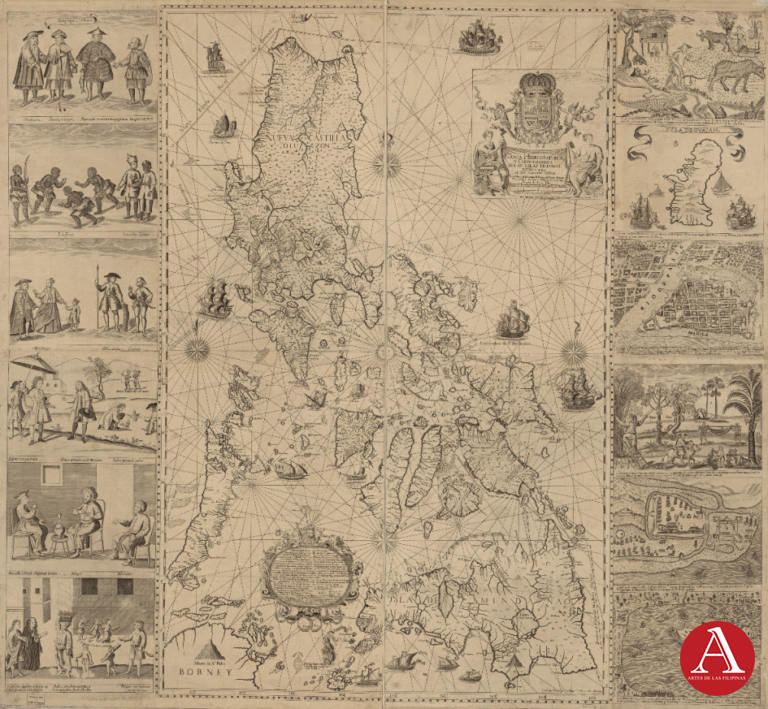
The Murillo Velarde Map (1734): A Fascinating Record of Filipino Life
By the Artesdelasfilipinas Research Team
Introduction to the Murillo Velarde Map
The Carta Hydrographica y Chorographica de las Islas Filipinas of 1734, more commonly known as the Murillo Velarde map, is considered the first comprehensive and scientifically grounded map of the Philippine archipelago. Produced under Spanish colonial administration by Jesuit cartographer Pedro Murillo Velarde, with the collaboration of Filipino artist Francisco Suárez and engraver Nicolás de la Cruz Bagay, it occupies...
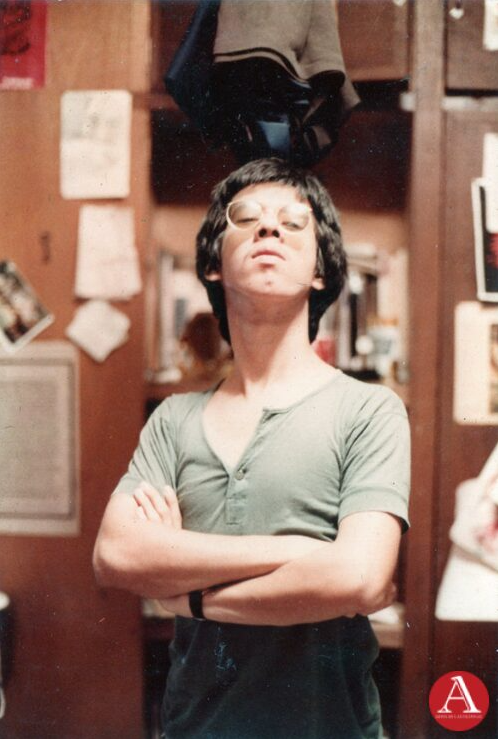
FEDERICO SIEVERT'S PORTRAITS OF HUMANISM
JUNE 2024 – Federico Sievert was known for his art steeped in social commentary. This concern runs through a body of work that depicts with dignity the burdens of society to offer a counter-narrative to demagogues and shape the future generation’s understanding of the nation’s socio-political past. The problems of slums such as inadequate housing and squalid, overcrowded, joblessness, urban poverty, aspirations and strength of will became his thematic discourse. Sievert was a pivotal member of the Con...
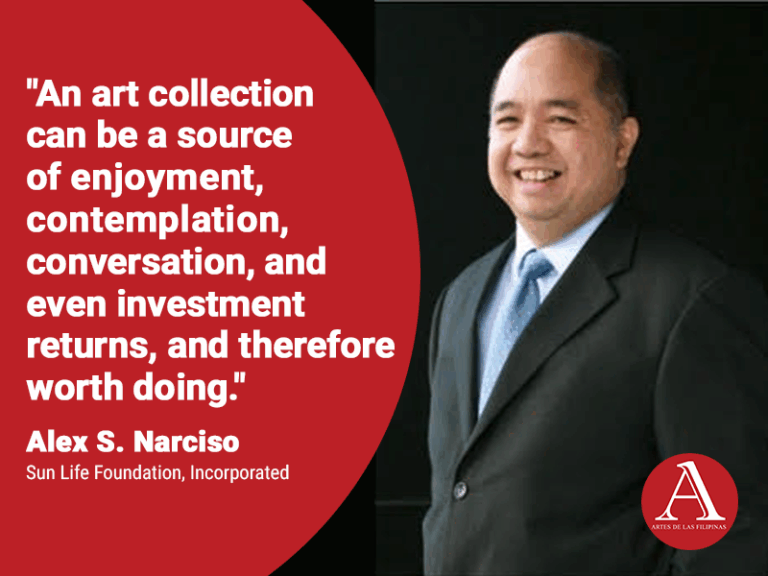
FILIPINO ART COLLECTOR: ALEXANDER S. NARCISO
March 2024 - Alexander Narciso is a Philosophy graduate from the Ateneo de Manila University, a master’s degree holder in Industry Economics from the Center for Research and Communication and a fellow with distinction of the Life Management Institute. He started his profession as a career agent in Sun Life in 1986 before moving to the head office in 1989, in charge of various agency support roles that include sales training and promotions and agency events. He then took the role of Director for Marketing, Chi...

Paintings missing after Oslo bombing
Oslo, Norway -- Concern is mounting about the fate of large numbers of works of art owned by Norwegian government ministries or lent to them by the Nasjonalmuseet (National Museum of Art, Architecture and Design) and Public Art Norway (Koro), following the terrorist attack in Oslo on 22 July. The buildings damaged in the bombing contained works by artists including Munch, Christian Krohg and Anne Katrine Dolven.
Some 43 pieces loaned by the Nasjonalmuseet are missing, including works by Krohg, Dolven and Jakob Weidemann....
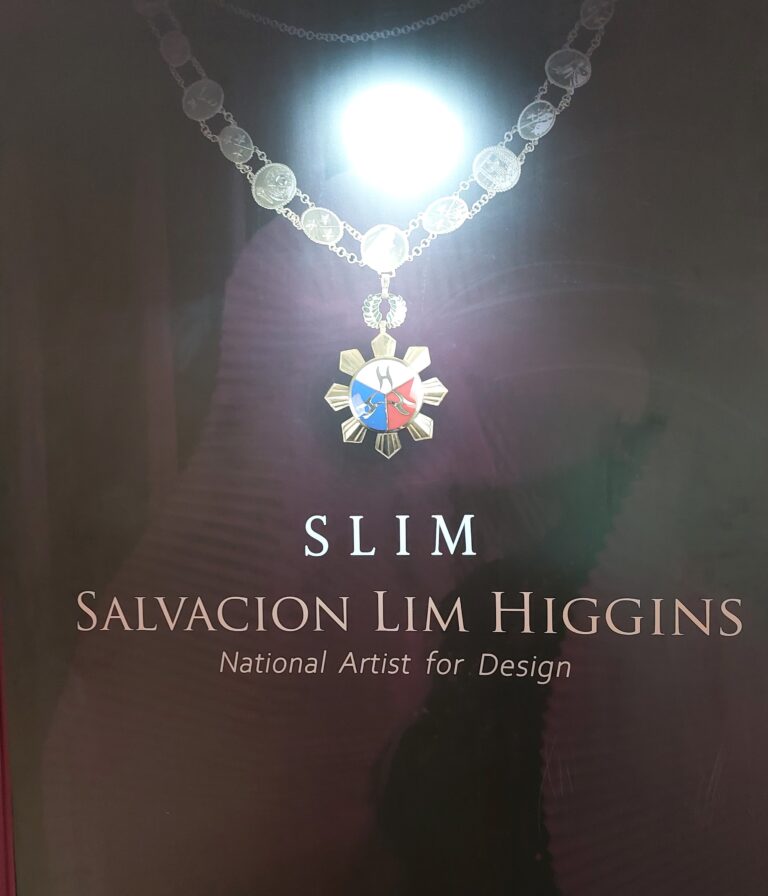
An Exhibition of the Design Legacy of Salvacion Lim Higgins
September 2022 – The fashion exhibition of Salvacion Lim Higgins hogged the headline once again when a part of her body of work was presented to the general public. The display is chic, refreshing, modern, contemporary and pure joy that any wearer from yesterday to today continues to surprise. Ironically, the exhibition was displayed in the lobby of a mall where foreign brands took up most of the space, exerting significant competitive pressure on made-to-measure fashion. But this is precisely the objective of...
- The Murillo Velarde Map (1734): A Fascinating Record of Filipino Life
- Ginto A Golden Heritage From Our Filipino Ancestor
- Antique "Santos" Are Much More Than Folk Art
- The Culture and Art of the Mangyan
- The Manunggul Jar as a Vessel of History

The Murillo Velarde Map (1734): A Fascinating Record of Filipino Life
By the Artesdelasfilipinas Research Team
Introduction to the Murillo Velarde Map
The Carta Hydrographica y Chorographica de las Islas Filipinas of 1734, more commonly known as the Murillo Velarde map, is considered the first comprehensive and scientifically grounded map of the Philippine archipelago. Produced under Spanish colonial administration by Jesuit cartographer Pedro Murillo Velarde, with the collaboration of Filipino artist Francisco Suárez and engraver Nicolás de la Cruz Bagay, it occupies...
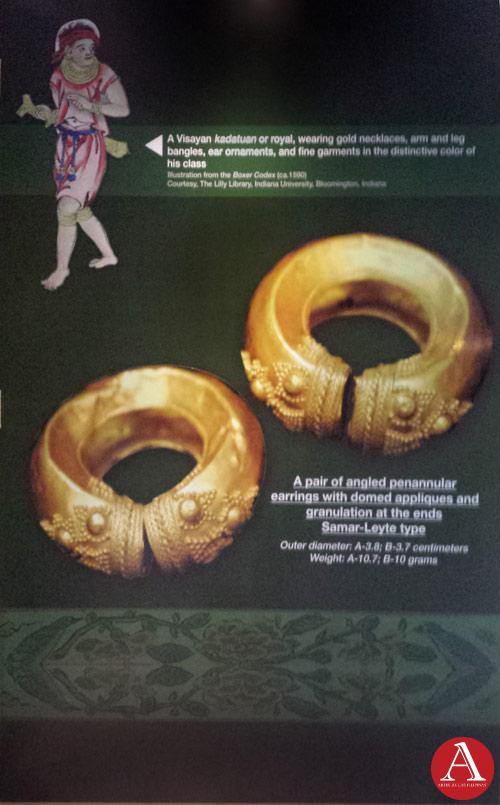
Ginto A Golden Heritage From Our Filipino Ancestor
GINTO
A GOLDEN HERITAGE FROM OUR FILIPINO ANCESTOR
March 2016–This exhibit feature ancient ornaments crafted by our Filipino ancestor from 700 to 1,200 years ago. These form part of the Bangko Sentral ng Pilipinas (BSP) Pre-Hispanic Gold Collection.
The illustration that depict how these exquisite gold pieces were used are from the Boxer Codex, a manuscript written in 1590 with colored drawings of ethnic groups in the Philippines at the time of their initial contact with the Spaniards
In the Philippines,...

Antique "Santos" Are Much More Than Folk Art
March 2015--When the Spaniards arrived in the Philippines with sword and cross in hand some four centuries ago, they brought with them the art of religious image-making.
The first “santo” on Philippine soil was a small wooden image of the Infant Jesus, presented by the explorer Ferdinand Magellan in 1521 to Queen Juana in Cebu, after the Queen, Rasjah Humabon and their subjects had been baptized Christians. Today that gift, garbed in gold and glowing with jewels offered by the faithful, is venerated as the...

The Culture and Art of the Mangyan
September 2012--The Mangyan tribe has been included in the history of Mindoro. Spaniards have long documented the life of the Mangyan people. However, much is still to be learned from the culture of one of the Philippines’ richest ethnic group. Mangyan refers to the Philippine ethnic group living in Mindoro Island but some can be found in the island of Tablas and Sibuyan in the province of Romblon as well as in Albay, Negros and Palawan. The word Mangyan generally means man, woman or person without any refere...
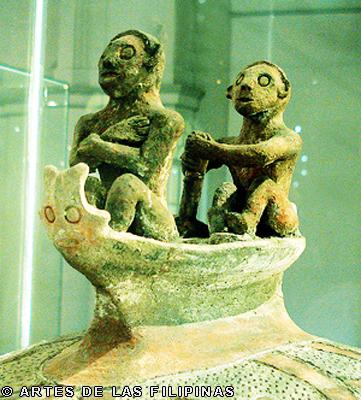
The Manunggul Jar as a Vessel of History
"…the work of an artist and master potter."--Robert Fox
27th April 1995—I was 11 years old when I visited the National Museum -- the repository of our cultural, natural and historical heritage. I remembered the majesty of climbing those steps and walking past the Neo-classical Roman columns until I was inside the Old Congress Building.
Today, if the Metropolitan Museum’s identifying piece was the painting Virgenes Cristianas Expuestas Al Populacho by Felix Resurrecion Hidaldo and the GSIS Museum its Parisian Life by the...
- An Exhibition of the Design Legacy of Salvacion Lim Higgins
- Patis Tesoro's Busisi Textile Exhibition
- Galleria Taal's Select Photo Exhibition
- Ancient Name Given to the Islands
- Carcar, Cebu

An Exhibition of the Design Legacy of Salvacion Lim Higgins
September 2022 – The fashion exhibition of Salvacion Lim Higgins hogged the headline once again when a part of her body of work was presented to the general public. The display is chic, refreshing, modern, contemporary and pure joy that any wearer from yesterday to today continues to surprise. Ironically, the exhibition was displayed in the lobby of a mall where foreign brands took up most of the space, exerting significant competitive pressure on made-to-measure fashion. But this is precisely the objective of...
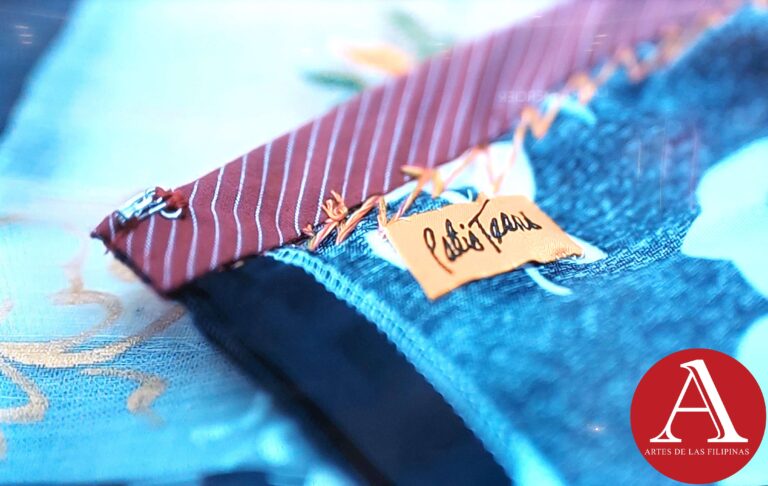
Patis Tesoro's Busisi Textile Exhibition
July 2022 -- The exhibition explores the often-surprising history of the celebrated Philippine hand-made textiles (jusi and piña), intricate patterns and designs, as well as the thinking and creativity of Patis Tesoro in how she promotes the traditional looming techniques and supporting community-based farming initiatives to create her distinctive dyes, beadwork, embroideries, prints and weaves. Through this exhibition, Tesoro gave relevance to today’s Philippine costume design and fashion industry, strengthening further our Philippine cultural identity....
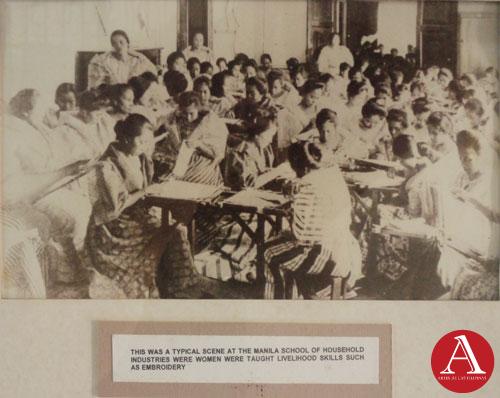
Galleria Taal's Select Photo Exhibition
December 2016--This ancestral house was built circa 1870 by Domingo Ilagan and Maria Martinez (who died both in 1903). They had six children: Aniceto Ilagan, Rosario I, Villanueva, Candida I. Barrion, Conception I. Sison, Julita Ilagan and Juan Ilagan. The Ilagan house was actually an ancestral house but Candida paid off her siblings to gain, sole ownership. Candida who married Antonio Barrion, a lawyer and delegate to the 1935 Constitutional Convention representing the 3rd district of Batangas, had three daughters Nellie...

Ancient Name Given to the Islands
July 2016--ifferent Island of the Philippine archipelago had bad various names in history. The native inhabitants had their own names, but as each wave of foreign voyagers touch these places they either baptized them with their own appellation or misspelled the native names due to differences of language and pronunciation. To worsen the confusion map maker gave the different names to the same place. The list based on that first prepared by Pardo de Tavera, enumerates alphabetically the names given to islands and places i...
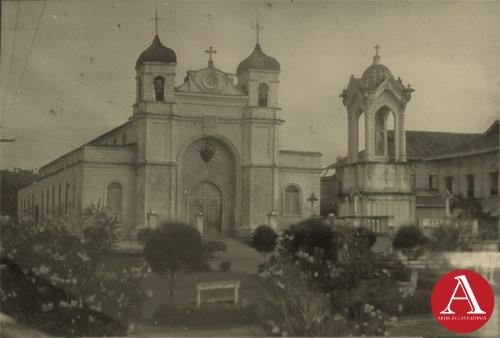
Carcar, Cebu
July 2016-- Carcar has been established a component city of the Province of Cebu by virtue of Republic act 9436 which passed into law on April 15, 2007, and ratified by the people of carcar in a referendum on July 2, 2007. Carcar had progressed from a small seaside settlement around 40 kms. South of “Zebu” or “Sugbu” now Cebu City, to what it is today.
Land Resource:
The total land resource or land area of Carcar is, 12,200 hectares per re plotted map of the DENR approved in September 2012. The land of Carcar City is generally level...
- Break the Silence Over Fakes
- Trying to understand why art can offend, and why artists should continue to be free
- If art journalism is in trouble, what about publishing?

Break the Silence Over Fakes
April 2012 -- The press has recently been full of reports about forgeries. In Europe, fakes by Wolfgang Beltracchi have embarrassed a number of experts and collectors. In the US, a painting purportedly by Jackson Pollock that was sold for $17m is the subject of a lawsuit against the now-closed Knoedler gallery and its former president Ann Freedman. This “Pollock”, moreover, seems to be only the tip of the iceberg, since it appears to belong to a surprisingly large collection of pictures supposedly paint...
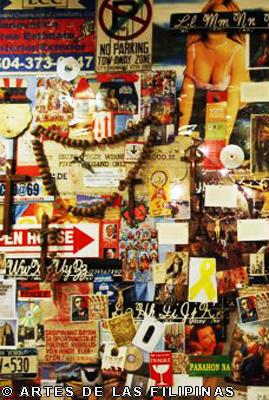
Trying to understand why art can offend, and why artists should continue to be free
“What in art gives such remarkable power that it can offend? What makes people susceptible to being offended?” Thus spoke Prof. Flaudette May Datuin, taking off from WJT Mitchell’s What Do Pictures Want? I’m glad I attended the UP Arts Studies forum yesterday on the now closed “Kulo” exhibit at CCP. It was such an intelligent, unemotional exchange of facts and ideas on a wide range of offensive art, audience react...

If art journalism is in trouble, what about publishing?
Jamie Camplin is the managing director of Thames & Hudson, a publishing firm based in London, England. He wrote an opinion piece for the June 2009 Art Newspaper that may interest general art readers and museum publishers. Camplin raises the question: if art book publishing is to remain vital, how do we keep producing fresh, thoughtful publications at a reasonable price point? He begins: Is there a crisis in art book publishing?
Most people who love art—collectors, gallery-goers, curators, critics, dealers an...
- Paintings missing after Oslo bombing
- Intricate, Beautiful, Raunchy: Japan Embraces Its Ancient Erotic Print Tradition
- A Stolen Picasso Painting Shipped As A Christmas Present Has Finally Been Seized
- Van Gogh was murdered, claims forensic expert: "He did not shoot himself"
- Posthumous Prognosis for Supposedly Syphilitic Gauguin, via His Teeth

Paintings missing after Oslo bombing
Oslo, Norway -- Concern is mounting about the fate of large numbers of works of art owned by Norwegian government ministries or lent to them by the Nasjonalmuseet (National Museum of Art, Architecture and Design) and Public Art Norway (Koro), following the terrorist attack in Oslo on 22 July. The buildings damaged in the bombing contained works by artists including Munch, Christian Krohg and Anne Katrine Dolven.
Some 43 pieces loaned by the Nasjonalmuseet are missing, including works by Krohg, Dolven and Jakob Weidemann....
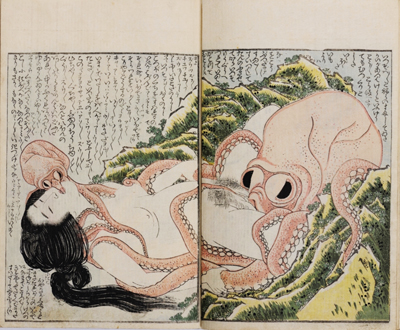
Intricate, Beautiful, Raunchy: Japan Embraces Its Ancient Erotic Print Tradition
October 2015-- Ukiyo-e, the popular color woodblock prints of Japan, are globally recognized and renowned, but their raunchier examples tend to see less light, rarely going on public display. Known as shunga (“spring pictures”), these highly erotic scenes comprise a genre of their own, and an exhibition devoted entirely to them has opened for the first time in their country of origin. Shunga, currently on view at Tokyo’s Eisei-Bunko Museum, features 133 works shown over two consecutive display peri...

A Stolen Picasso Painting Shipped As A Christmas Present Has Finally Been Seized
March 2015--A stolen Picasso painting which was considered lost for years has resurfaced in the United States, where it had been shipped under false pretenses as a $37 Christmas present labeled as “art craft." The 1911 painting, La Coiffeuse (The Hairdresser), was discovered in December in a FedEx shipment from Belgium to Long Island City.
The US attorney for the Eastern District of New York, Loretta Lynch, filed a civil forfeiture suit on Thursday, February 26 to return the painting to France. The work is owned by the F...
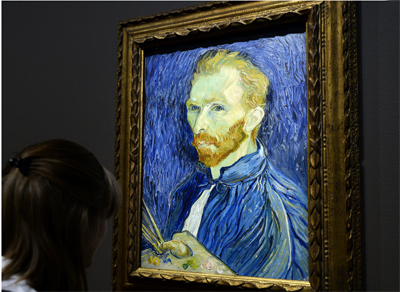
Van Gogh was murdered, claims forensic expert: "He did not shoot himself"
November 2014--The true nature of Vincent van Gogh’s death continues to be a topic ripe for mystery – after a leading forensics expert has claimed that the artist was murdered.
The Sunflowers painter died an agonising 29 hours after taking a bullet to the abdomen in a wheat field near Paris in 1890. On his death bed he apparently revealed he had shot himself.
However, Dr. Vincent Di Maio, an expert on gunshot injuries, has said that he be believes the wound was “not self-inflicted”.
According to Vanity Fair, Di...
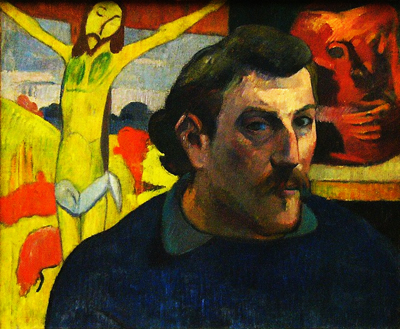
Posthumous Prognosis for Supposedly Syphilitic Gauguin, via His Teeth
March 2014--It’s long been believed that painter Paul Gauguin was wrecked by syphilis when he died in the Marquesas Islands in 1903, but thanks to some old teeth thrown down a well, he may posthumously be given a cleaner bill of health.
As Martin Bailey reported for the Art Newspaper, researchers with Chicago’s Field Museum analyzed four dislodged teeth that were found in a well in an archeological dig near the hut where Gauguin’s lived from 1901 until his death. The teeth were discover...
- Accustomed Othering in Colonial Writing
- A Critical Essay on Constructing the Filipina: A History of Women�s Magazines (1891-2002)
- A Critical Essay on Constructing the Filipina: A History of Women’s Magazines (1891-2002)
- The (Stifling) Spaces of Femininity in the Philippine Art World: A Book Review on Flaudette May Datuin's Home Body Memory: Filipina Artist in the Visu
- Book Review: Edifice Complex: Power, Myth, and the Marcos State Architecture by Gerard Lico

Accustomed Othering in Colonial Writing
September 2015--There are at least three major discursive issues that can be extracted from the document, Customs of the Tagalogs written by Juan de Plasencia in 1589, if we are to put socio-political context into the text – first, the issue of authorship; second, the discourse of power in colonial writing; and third, the logic of binarism or the Occident-Other dichotomy. These are interrelated threads that probably constitute major segments of colonial historical writing in the Philippines.
The authorial voic...

A Critical Essay on Constructing the Filipina: A History of Women�s Magazines (1891-2002)
April 2013--Constructing the Filipina: A History of Women’s Magazines from 1891-2002 by Georgina Reyes Encanto is a first attempt to record the history of Women’s magazines in the historical-feminist perspective. The author herself is the former Dean of Mass Communication and a Journalism professor in the University of the Philippines. Her research interests mainly cover Philippine press history, feminism and gender issues in Philippine media and popular culture.
She begins her book with an intr...

A Critical Essay on Constructing the Filipina: A History of Women’s Magazines (1891-2002)
April 2013--Constructing the Filipina: A History of Women’s Magazines from 1891-2002 by Georgina Reyes Encanto is a first attempt to record the history of Women’s magazines in the historical-feminist perspective. The author herself is the former Dean of Mass Communication and a Journalism professor in the University of the Philippines. Her research interests mainly cover Philippine press history, feminism and gender issues in Philippine media and popular culture.
She begins her book with an intr...

The (Stifling) Spaces of Femininity in the Philippine Art World: A Book Review on Flaudette May Datuin's Home Body Memory: Filipina Artist in the Visu
August 2012--Home Body Memory: Filipina Artists in the Visual Arts, 19th Century to Present by Flaudette May Datuin, PhD. is a recount of the history of Filipina artist from during the 19th Century until the present time on which the book was written and published in early 2000s. Datuin, an Associate Professor in the Art Studies Department of the University of the Philippines, is an advocate of feminism in the Philippines. She has curated and organized various exhibitions and forums on women artists in the Philippines and across...

Book Review: Edifice Complex: Power, Myth, and the Marcos State Architecture by Gerard Lico
The book is about Marcosian Architecture. The author started each chapter with quotes from different scholars as an introduction to his discussions. The book is very much influenced by Michel Foucaults discourse on power and knowledge. Lico says that Marcos regime recognized the nexus of architecture and society, its potential for influencing the community, and wielded this weapon to promote the aesthetics of power in the built form. The book seeks to contribute to theoretical work on the relationship betwe...

